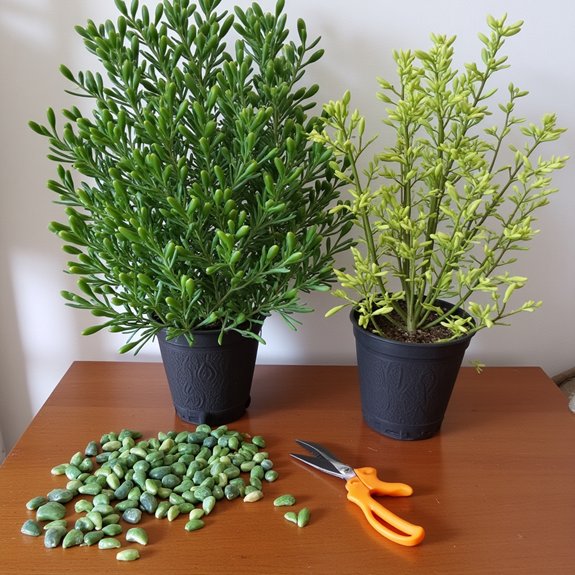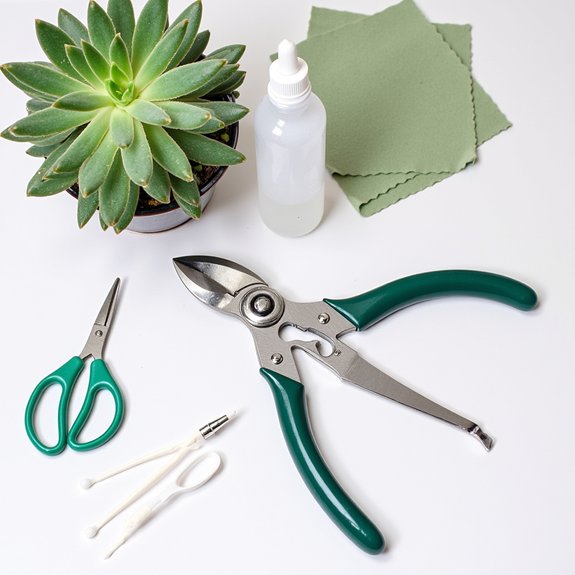Did you know that unpruned jade plants can become 70% more susceptible to breakage from their own weight? You’ve probably noticed your jade getting leggy, with gaps between leaves and weak, spindly branches that droop under pressure. Most people think jade plants don’t need pruning, but that’s where they’re wrong. The right cuts at the perfect time can transform your struggling succulent into a robust, compact beauty that’ll surprise you.
Contents
Why Your Jade Plant Needs Regular Pruning

While jade plants are remarkably low-maintenance, they’ll thrive with occasional pruning that keeps them healthy and attractive. Regular trimming promotes growth enhancement by encouraging fuller branching, especially in younger plants. You’ll notice stretched, leggy growth when your jade doesn’t receive adequate light, making pruning essential for maintaining its compact appearance.
Pruning also serves as effective pest prevention by removing damaged or diseased sections before problems spread throughout the plant. Additionally, you can control your jade’s size and shape to fit specific spaces indoors, while maintaining the plant’s overall vigor through consistent maintenance practices.
Perfect Timing for Jade Plant Pruning
Timing your jade plant pruning correctly makes the difference between sluggish recovery and vigorous new growth. Early spring offers the ideal window when temperatures warm up, triggering your plant’s natural growth patterns. However, don’t wait for perfect timing when you spot signs damage like yellowing leaves, stretched stems, or pest infestations.
Address problems immediately to prevent spreading. Throughout spring works well for encouraging branching and shaping. Your jade will recover faster during its active growing season, producing robust new shoots within weeks rather than struggling through months of slow healing.
Essential Tools for Successful Jade Pruning

Sharp, clean pruning shears make the difference between a clean cut that heals quickly and a ragged wound that invites disease. You’ll need well-maintained, sharp pruning shears as your primary tool for effective trimming.
Don’t reach for regular scissors or attempt hand-pulling thicker branches. These methods won’t deliver the pruning benefits you’re seeking and can damage your jade plant unnecessarily.
Clean your tools before each use to prevent spreading infections between cuts. This simple step in your maintenance tips routine protects your plant’s health and guarantees successful pruning results every time.
Step-by-Step Jade Plant Pruning Techniques
Now that you’ve got your sharp, clean pruning shears ready, it’s time to put them to work with proper cutting techniques. Start by trimming branch ends on smaller plants to encourage fuller jade growth through increased branching.
For larger plants, remove stretched or leggy branches, but never cut more than one-third of the total plant. These pruning techniques prevent shock while promoting healthy recovery.
Focus on damaged leaves and weak branches first, cutting just above leaf nodes. Finally, shape your jade by removing lopsided sections, creating a balanced, attractive appearance that fits your space perfectly.
